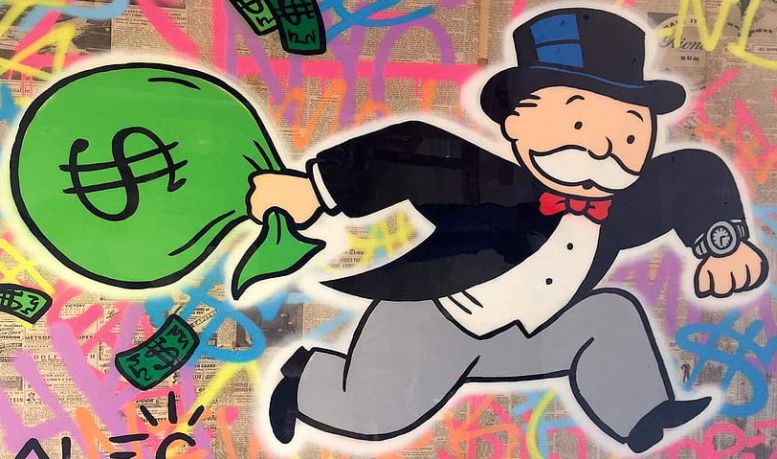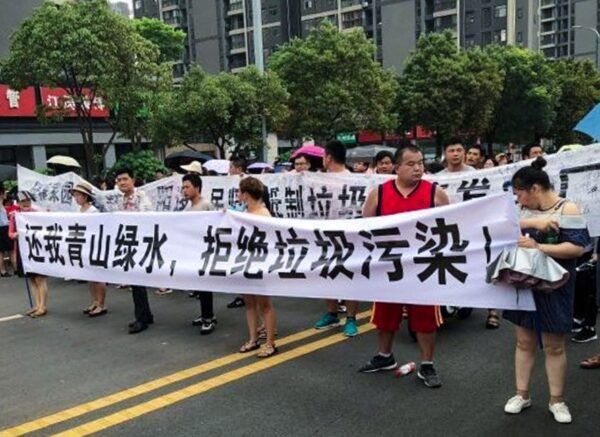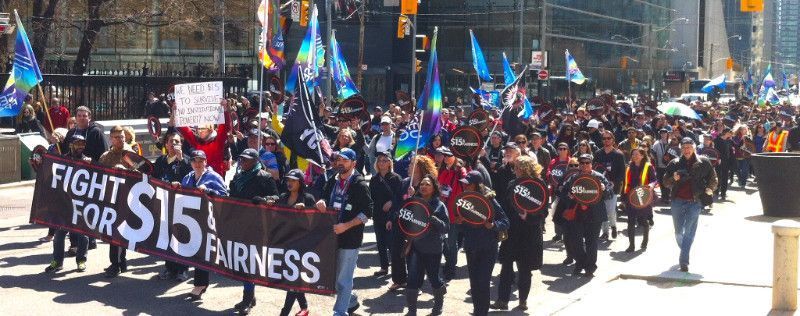Oliver Twist, desperately hungry in the workhouse, famously asked for “some more” thin gruel. Mr. Bumble is outraged and berates Oliver for his impertinence.
Fast forward to 2023 Ontario, land of the business fat cats, auto makers Volkswagen (VW) and Stellantis, who do not request “more,” they demand billions in subsidies, or else. Not a please or thank you. No manners from those capitalists! And unlike Oliver, instead of being berated, the Ontario and Federal governments generously pay up.
In April VW announced it will invest $7 billion of its money to build a massive factory in St. Thomas, in southwestern Ontario, to profitably manufacture batteries for electric vehicles (EV). In addition, it will receive $13 billion over the next decade from the federal government, with the Ontario government throwing in another $500 million in “direct incentives.” Socialist Alternative criticized this deal at the time.
In comes Stellantis
At the time, VW seemed to be the only game in town. However, there was a back story centring on another auto giant, Stellantis, which had got in ahead of VW in terms of getting subsidies from the Federal and Provincial governments. Stellantis is a multinational auto corporation formed in 2021 with the merger of the Italian–American conglomerate, Fiat Chrysler and the French PSA Group, to form the world’s fourth largest automaker by sales behind Toyota, Volkswagen, and Hyundai. The other player in this deal is LG Energy Solution (LGES), South Korean based and one of the largest battery makers in the world. Before VW had inked its deal, Stellantis had partnered with LGES to announce Ontario’s first major EV battery plant, in March 2022. This represented the largest automotive manufacturing investment in the history of the province. It’s located in Windsor, 193 kilometres west of the VW plant. Unlike VW, it will employ a unionized workforce. And the project goes under the name of NextStar Energy.
Stellantis threatens
At the time, Ottawa and Ontario were going to contribute $500 million each towards construction costs of the Windsor plant but tensions emerged a few months later in August 2022, when the US government passed the Inflation Reduction Act (IRA), which includes a massive package of clean-tech incentives (bribes) for companies. The IRA radically changed the level of incentives needed to attract an automaker to build a battery plant. By March this year, a deal had already been signed that would see VW get up to $13 billion in production subsidies for the planned plant in St. Thomas. Understandably, NextStar wanted a similar agreement to continue with their plant, already started, in Windsor. In early May, they abruptly stopped construction. They were understandably going to try to get more subsidies as up to then they were getting $1 billion compared to VW’s $13.5 billion.
And it was a demand that had some heft to it; there was even an element of blackmail involved. If they didn’t get what they wanted, NextStar threatened to abandon Windsor altogether and move the plant elsewhere. It was not an idle threat, and it wasn’t just the Windsor plant that was at risk, but also Stellantis’s plant in Brampton too. Seven weeks after the threat was first made, the province agreed to provide $5 billion in tax breaks with the other $10 billion coming from Ottawa.
VW gets $13.5 billion and now NextStar is getting $15 billion — a whopping $28.5 billion! And nothing for the taxpayer, no shares, no controls, no long-term guarantees.
And next?
With these two gifts totalling $28.5 billion, the Ontario and federal governments have created a precedent that probably other companies, with some “green” investment claims, will be looking at, wondering how they can get a similar handout. It will be hard for Ottawa to say no to some other scam from another part of Canada, without risking claims of inequality and favouring Ontario.
How will these corporate welfare cheques be paid for? Will the government raise taxes on the super-rich and corporations? Unlikely. More likely the money will come from cutting public services or more taxes on ordinary working-class people.
Is it a good investment?
From the point of capitalism — generating economic activity, employment and profits, it’s a reasonable plan. It is predicted that the VW battery plant alone would create $200 billion to $400 billion in value (spin-off jobs and other economic activity) over 35 years. The plants are predicted to provide 2,500 direct jobs at NextStar and 3,000 at VW.
It is claimed, by some, that if the projects don’t get these freebies, Canada will lose 5,500 jobs, which is not an insignificant number given the sharp decline in Canada’s auto sector. In 1999, three million vehicles were produced, mainly in Ontario. By 2022, production had fallen to 1.2 million and over the same time, more than 50,000 auto jobs vanished. Yet, the loss of jobs and 2.8 million vehicles — gas guzzlers, SUVs and pickups — at the time didn’t cause too much concern from the auto manufacturers and governments. Even the unions were stoic. Making millions of batteries, but not assembling full vehicles, is not going to restore Ontario’s auto manufacturing to its former glory.
EVs — the silver bullet?
EVs and their batteries are no panacea for climate change. Using government subsidies to produce them might make more sense than, say, carbon capture projects but in the timescale that scientists estimate for an effective fight against global warming, they will not play the role that is needed. An EV, like its internal combustion counterpart, is still a metal box, made from aluminum or steel. Making a tonne of aluminum emits more carbon than burning five tonnes of oil. Socialist Alternative explained some of the problems with EVs: the cost, problems with battery technology, exploitation of workers in the developing world for minerals used in battery production, and continuing the car-based infrastructure of highways, sprawl, and busy urban roads. Electric vehicles still use rubber tires and as they wear, they will continue to release particulates. A study from the UK shows that particulate emissions that are damaging to health are 1,000 times higher from tire-wear than from tailpipe emissions. The heavier the vehicle, the greater the emissions, so as manufacturers increase the range between charges with heavier batteries, particulate emissions will increase.
Congestion
Alongside emissions that cause climate change and damage health, there is also the damage of congestion and land use by cars in cities. If the number of cars remains the same, whether electric or gas-powered, the amount of land given over to cars and congestion remain the same.
Free public transit has an important role in tackling climate change and other harms from pollution, but it’s not a great advance if buses are held up in traffic by the same number of cars driving around. The cost of free public transit is small compared to the recently-agreed battery subsidies. Revenues from the transit farebox in the three biggest Canadian cities amount to $1.86 billion. That’s a mere 15 percent of $28.5 billion going to VW/NextStar. The other 85 percent from the VW/NextStar pot could be used to make more dedicated cycle lanes, purchase more electric buses, pedestrianize more zones in urban areas and build/extend subway lines in the larger cities.
Technological change
Both plants are planned to produce liquid electrolyte, lithium-ion batteries. There are multiple problems with lithium. The raw material is environmentally damaging to extract and refine. As with all raw materials, prices will fluctuate. Lithium is selling at roughly four times the price it was in 2020. Its price is likely to further increase as demand for batteries to store electricity increases. Lithium-ion batteries can catch fire and are also heavy.
All these factors will push the development of new battery technologies. Already, research is frantically going into solid state batteries (rather than liquid electrolyte), use of other metals and other technical changes.
It is not unforeseeable that in 10 years these plants will be obsolete. And Canada will have no say in their future.
Accountable money
For the $28.5 billion, the people of Ontario and Canada have no control over its use. No capitalist would give away that sort of money. At the very least the government should have insisted on decision-making shares.
Socialist Alternative argues that the minimum conditions should include a unionized workforce, with both the workers and the people of Ontario and Canada having real powers over any decisions.
Other ways to spend $28.5 billion
There are many ways to spend the $28.5 billion gift to VW/NextStar that would have a bigger impact in reducing climate change, improving life and would provide as many, if not more, jobs. Here are some suggestions:
- There’s the long considered, dedicated high speed (300 km per hour) electric rail service on the Windsor-Québec City corridor. There have been many studies with differing costs for different parts of the full route. It would drastically reduce travel times and shift passengers from cars and planes to much more energy efficient trains. It would also reduce car use within the cities connected. A 2011 study put the cost of the full route at $21.3 billion — updated for inflation, that is $28 billion. While there are variables around the costs, the $28.5 billion for VW/NextStar would go a long way to bringing this into reality and be a long-term investment in the environment and improved urban life.
- $28.5 billion would be enough to install a 7.5 kW solar system in 1.3 million homes. On the lighting front, LEDs also pack a serious punch for the environment. By 2027, widespread use of LEDs could reduce the country’s electricity use equal to the annual electrical output of 44 large electric power plants, and lead to total savings of more than $30 billion. Spend money to save money!
- To meet climate and affordability goals, most Canadian homes and buildings will need extensive renovation to be more energy efficient and use clean energy. The present government program, Greener Homes Grant, is capped at $5,000 per home, which is grossly inadequate to get homes to near zero emissions, and it only covers homeowners. The federal government has budgeted to spend $2.6 billion on this program. Costs vary significantly, depending on the building, but can be up to $100,000 per home. Socialist Alternative supports covering the full costs, especially for low-income households and expanding the current system to upgrade rental units (Canada Greener Affordable Housing). Some cities and provinces also provide some support. If the gift of $28.5 billion to VW/NextStar was instead added to the Green Homes Grant, and it was increased to $20,000, over 1.5 million homes could be upgraded.
- For $28.5 billion, Canada could build over 100,000 units of affordable housing units (average cost ~$250,000).
Oliver Twist started life as an orphan, moved to the workhouse, ran away from there only to meet up with Fagin and his school of pickpockets. He ended up with a substantial inheritance and lived happily ever after. Unlike Oliver, the pickpockets of VW and Stellantis don’t get an inheritance, but they do end up nicely with their government subsidies.
It’s the crazy, anarchic capitalist system that gets in the way of the many alternative ways to protect the environment and provide good jobs. Join Socialist Alternative in our fight to put an end to capitalism and bring about a genuinely green and sustainable world.




